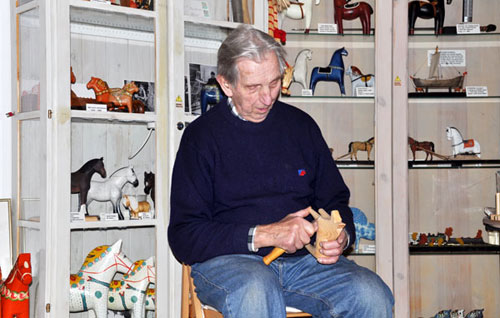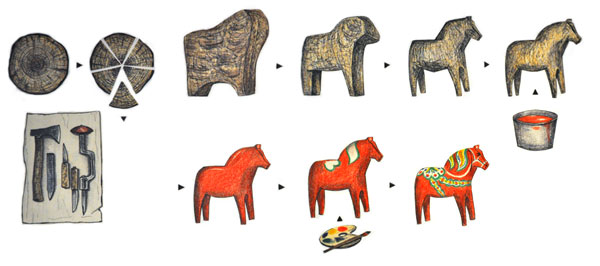HOME > HOW

At first, the wooden horses were usually carved with very simple tools: an axe, a knife, sometimes a saw and drill. Sandpaper was not originally used. The woods were fir, pine, spruce and birch.

The colors were made of raw and burned earth pigments or from iron and copper minerals, ground and strained. Today´s colors are mostly acrylic and oil color.
(Although the colors are not toxic, the painted horses are not suitable for small children to chew on.)

The characteristic curbits painting style was developed in Rättvik and Leksand during the late 18th century, but each village had its own patterns and traditions.
Beginning in the first half of the 19th centry, the horses were decorated using several colors of paint. The first ones looked much like the horses you see today.
Stickå Erik Hansson (1823-1897) born in Risa, was the best curbits painter of his time. He was a pioneer in using two colors on one paint brush, the special technique in painting Dala horses to this day.
Stickå Erik Hansson migrated to the USA in 1887 at the age of 64. To make it easy for the people in his new homeland to pronounce his name, he changed it to Eric Erickson.
- References
- - Wooden Horses of Sweden by Anne Marie Rådström (1991)
- - Dalahorse in Dalarna Museum by Rune Bondjers (2009)
- - Grannas A. Olssons Hemslöjd AB
- - Linné 2007
- - Wikipedia
